
Knysna is a town with 76,150 inhabitants in the Western Cape province of South Africa. It is one of the destinations on the loosely defined Garden Route tourist route. It is situated 60 kilometres east of the city of George on the N2 highway, and 33 kilometres west of the Plettenberg Bay on the same road.
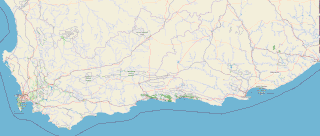
The Garden Route is a 300-kilometre (190 mi) stretch of the south-eastern coast of South Africa which extends from Witsand in the Western Cape to the border of Tsitsikamma Storms River in the Eastern Cape. The name comes from the verdant and ecologically diverse vegetation encountered here and the numerous estuaries and lakes dotted along the coast. It includes towns such as Witsand, Heidelberg, Riversdale, Stilbaai, Albertinia, Gouritsmond, Knysna, Plettenberg Bay, Mossel Bay, Oudtshoorn, Great Brak River, Little Brak River, Wilderness, Sedgefield and Nature's Valley; with George, the Garden Route's largest city and main administrative centre.

George Municipality is a local municipality within the Garden Route District Municipality, in the Western Cape province of South Africa. As of 2011, the population is 193,672. Its municipality code is WC044.

George is the second largest city in the Western Cape province of South Africa. The city is a popular holiday and conference centre, as well as the administrative and commercial hub and the seat of the Garden Route District Municipality. It is named after the British Monarch George III.
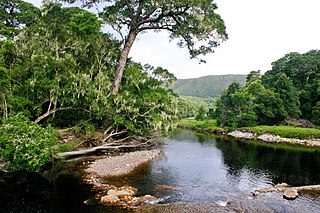
The Knysna–Amatole montane forests ecoregion, of the tropical and subtropical moist broadleaf forests biome, is in South Africa. It covers an Afromontane area of 3,100 square kilometres (1,200 sq mi) in the Eastern Cape and Western Cape provinces.

Soufli is a town in the Evros regional unit, Greece, notable for the silk industry that flourished there in the 19th century. The town stands on the eastern slope of the twin hill of Prophet Elias, one of the easternmost spurs on the Rhodope Mountains. It is situated in the center of the Evros regional unit, 65 km north of Alexandroupoli and 50 km southwest of Orestiada, on Greek National Road 51/E85 which links Alexandroupoli with Edirne and the Bulgarian border at Ormenio. The town center is only 500m from the Evros River. Soufli is the seat of the municipality of Soufli.
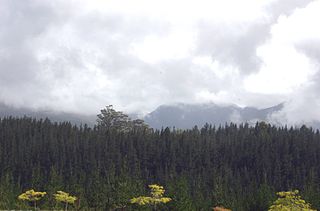
Saasveld Forestry College is a South African college for the training of foresters, situated on the Garden Route in the Western Cape between George and Knysna. Before moving to its present location in 1932, it was located at Tokai, Cape Town.

The Outeniqua Mountains, named after the Outeniqua Khoikhoi who lived there, is a mountain range that runs a parallel to the southern coast of South Africa, and forms a continuous range with the Langeberg to the west and the Tsitsikamma Mountains to the east. It was known as Serra de Estrella to the Portuguese. The mountains are part of the Garden Route of South Africa.
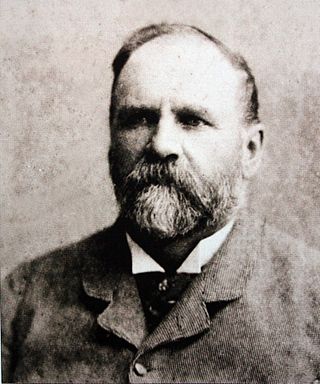
Thomas Charles John Bain was a South African road engineer. As a prolific road building pioneer, Bain was responsible for the planning and construction of more than 900 km of roads and mountain passes, many of them still in use today, over a career spanning from 1848 until 1888. These passes through the mountain ranges between the thin coastal plain and the interior of the former Cape Colony in South Africa, played a major role in opening up the vast hinterland of South Africa.

Charles Wilhelm Thesen was a Norwegian-born South African shipowner and timber merchant who played a leading role in the public affairs of the South African town of Knysna. He was actively involved in the timber and shipbuilding industry of the region, and acquired Paarden Island in the Knysna Lagoon, on which he built a sawmill and shipyard. The island was later renamed Thesen Island, after him and his family.

Southern Afrotemperate Forest is a kind of tall, shady, multilayered indigenous South African forest. This is the main forest-type in the south-western part of South Africa, naturally extending from the Cape Peninsula in the west, as far as Port Elizabeth in the east. In this range, it usually occurs in small forest pockets, surrounded by fynbos vegetation.
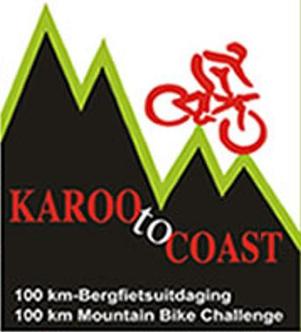
The Karoo to Coast is an annual 100 km mountain bike race held in September down the Prince Alfred's Pass from Uniondale to Knysna in South Africa. In 2007 it was voted one of the top ten mountain bike races in the country. All proceeds from the race go to the Lions Clubs International SightFirst program for sight restoration surgery for the poor.

Millwood in South Africa was the site of a short-lived gold rush in the 1880s. Millwood Mining Village was located in the foothills of the Outeniqua Mountains near Knysna and had a population of a few hundred at the height of its small-scale mining activity which lasted only five years, largely due to the difficulty of following the vein in much-folded formations.

Henry Frederick Francis Adair Barrington, was a Cape Colony lawyer, farmer and member of Parliament of the Cape of Good Hope.

The Knysna elephants were the relicts of once substantial herds of African bush elephant in the Outeniqua/Tsitsikamma region of southernmost South Africa. As of 2022, the herds have been reduced to a lone adult female. The elephant herds roamed the southern tip of Africa into the 1800s and 1900s, when contact with European farmers and hunters led to their decimation. It is conjectured that about 1,000 elephants historically roamed the Outeniqua/Tsitsikamma area. A 2006 DNA analysis of dung samples revealed the presence of at least 5 cows and possibly some bulls and calves, moving within an area of 121,000 hectares of forest managed by SANParks – the only unfenced elephant group in South Africa. However, by 2019, researchers realised that a mature female at the Knysna Forest was the last to survive.

Circles in a Forest is a novel by Dalene Matthee, originally written and published in Afrikaans as Kringe in 'n Bos in 1984. It is the first book in her series of four "forest novels", set in the Knysna forest. The other three "forest novels" are Fiela se Kind published in 1985, Moerbeibos published in 1987 and Toorbos published in 2003. Circles in a Forest became a best-seller and has been translated into English, Portuguese, Dutch, French, Icelandic, Spanish, Hebrew, German, Swedish, Italian, Finnish and Norwegian. The novel is a coming-of-age story about an Afrikaans woodcutter named Saul Barnard, set in and around the South African town of Knysna in the nineteenth century, focusing on the impact of a gold rush on the Outeniqua forest, its Afrikaans and Khoekhoe residents and the Knysna elephants.

Seven Passes Road is the oldest direct road link between George and Knysna in Western Cape, South Africa. The road which traverses seven passes was engineered by Thomas Charles John Bain and Adam de Smidt. It was completed around 1883 and is situated just south of the Outeniqua Mountains.

The Knysna River is a river flowing in the Western Cape province in South Africa. It has its source in the Outeniqua Mountains, in the district of Eden, then it goes towards the Indian Ocean, in which it opens with a large estuary, where is located the town of Knysna, which takes its name from the river. Its course, 40 km long, is navigable only in its final part.
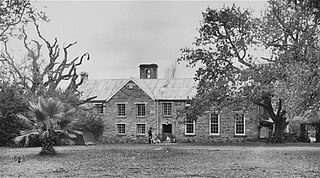
Portland Manor is a manor house near Rheenendal in the Western Cape, South Africa. The building was originally constructed in 1863 by Sir Henry Barrington. Situated at the foothills of the Outeniqua Mountains, the estate is surrounded by lush greenery and forests. Portland Manor is set on 212 acres of land and is about 10 km northwest of Knysna.

Jonkersberg is a small village and forestry station in the Western Cape province of South Africa.






















